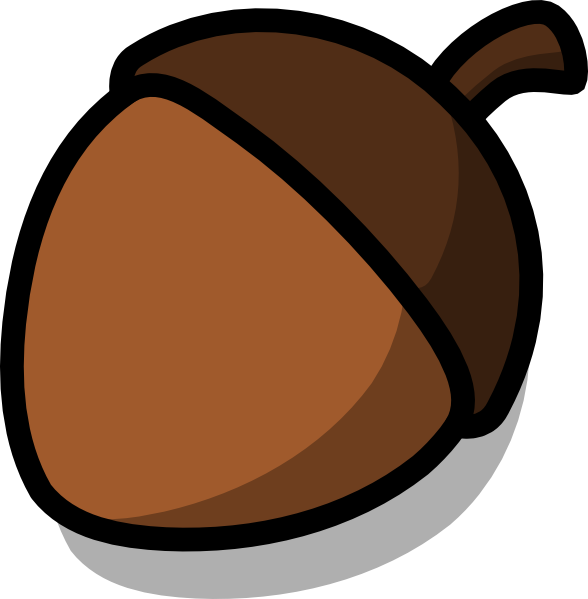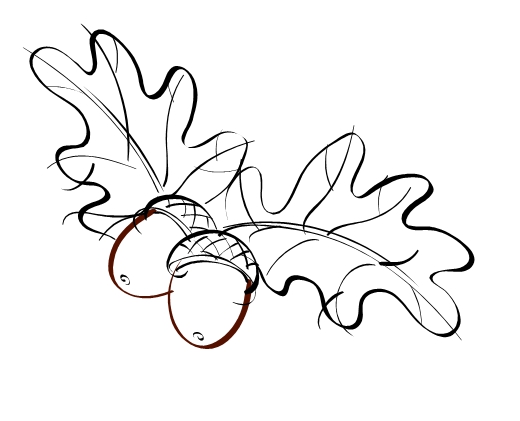

Once established, Gambel oak is drought tolerant and does not require irrigation.
Broken acorn drawing full#
Gambel oak requires full sun and is well adapted to rocky sites and alkaline soils. Although Gambel oak leaves have lower pH, once degraded, they become neutral and do not fluctuate soil pH. It is a common misbelief that oak leaves increase soil acidity. However, leaves from Gambel oak degrade very slowly, so shred them before using as a mulch. Gambel oak leaves can be used as garden mulch to regulate soil temperature, lower weeds, improve soilwater retention, and add nutrients to the soil. Young leaves and acorns are more toxic compared to old and mature leaves. More than 75% of an animal diet comprised of Gambel oak may be fatal. All parts of Gambel oak tree contain gallotannins which may be toxic to herbivores such as cattle, sheep, and horses. It is also a great choice for watershed protection. Oak provides valuable food and cover to wildlife such as deer, birds, and squirrels. Having Gambel oak on the property generally adds an aesthetic and monetary value to the property. Gambel oak is a long-lived and robust plant, making it an effective planting as a windbreak. It can be planted or maintained in natural or wildland-type areas of the landscape. The leaves are dark green in the summer, turn yellow or reddish-brown in late fall and then drop from the trees. Leaves emerge late in the spring, allowing open sunlight conditions for spring flowers nearby the tree.

Due to its small size, robust nature, low water requirement, and fewer pests problems, it fits well on residential lots, conservation parks, and below or close to electrical lines but may not be a good choice for a single specimen tree or a street tree. It can be grown to screen parking lots and undesirable views.

Gambel oaks are small, informal, deciduous trees that are sometimes used for mass planting. That Distinguish Oak Trees Usability in the Landscape Gambel Oak Leaves and the Typical Acorn Fruit Rigid and heavy, Gamble oak wood is sometimes used for firewood. The bark is red-brown to gray with rough furrows on older stems. The fruit is a typical acorn, about ¾ of an inch long and half enclosed with a cup (Figure 1). Branches typically are ascending, forming an irregular crown. Twigs are brownish in color, usually crooked and distorted. Leaves are about 5 inches long with several rounded, deeply cut lobes on each side of the central vein. Gambel oak grows as a shrub or a small tree with an average height of 20–30 feet and a width of 15 feet. It can grow well in the USDA hardiness zones between 3 and 9 and is well adapted to the Wasatch Front (zone 5). It is usually distributed in dry slopes and canyons at an elevation of 3000–8000 feet. Gambel oak ( Quercus gambelii Nutt.), commonly called scrub oak, Rocky Mountain white oak, or Utah white oak, is native to the western part of the U.S., including Colorado, Utah, New Mexico, Wyoming, and Arizona.


 0 kommentar(er)
0 kommentar(er)
